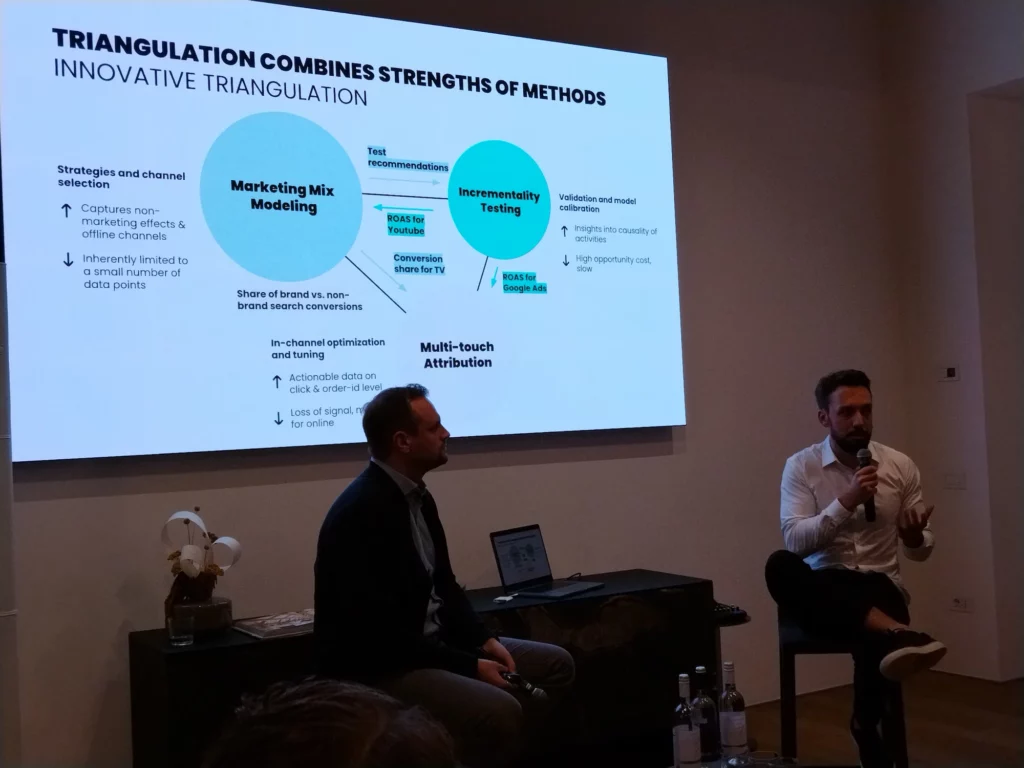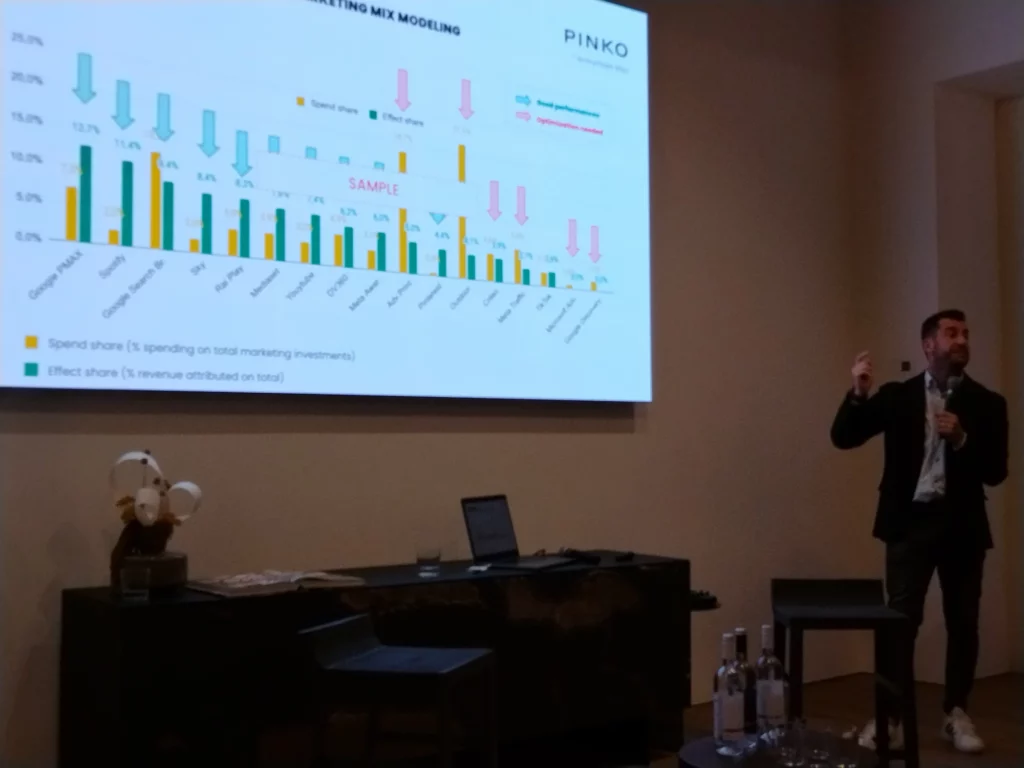प्रत्येक विपणन अभियान के मन में एक लक्ष्य होता है, कठिन हिस्सा यह मापना है कि अभियान अपने लक्ष्य तक पहुंचा है या नहीं।
जब फैशन ब्रांड कोई मार्केटिंग अभियान शुरू करते हैं तो आम तौर पर उनके दिमाग में एक ही लक्ष्य होता है: ब्रांड जागरूकता पैदा करना और पोजिशनिंग किसी विशिष्ट भौगोलिक क्षेत्र में।
फैशन ब्रांड इस लक्ष्य को प्राप्त करने का प्रयास करते समय अपने लक्षित ग्राहक के मूल्यों को प्रतिबिंबित करने वाली शानदार छवियाँ बनाते हैं। व्यक्ति के प्रकार के आधार पर वे ऐसे लोगों तक पहुँचने का प्रयास कर सकते हैं जो निम्न में विश्वास करते हैं:
- स्थिति (समृद्ध, विलासिता)
- फैशन के रुझान (ट्रेंडी, फैशनपरस्त)
- स्वतंत्र विचारक (मौलिकता, प्रवृत्ति निर्धारक, शीघ्र अपनाने वाले)
- अन्य उपभोग शैलियाँ

छवि द्वारा https://www.facebook.com/seenoutdoor/
पिछले वर्षों में डिजिटल चैनलों और अन्य के जुड़ने से विपणन मिश्रण मल्टी चैनल बन गया है। अंक को छूने विपणन मिश्रण के लिए
पारंपरिक और नए फैशन विपणन चैनल
पारंपरिक विपणन चैनल
- वोग, एले जैसी पेपर पत्रिकाएँ और समाचार पत्र (एनवाई टाइम्स, ले फिगारो, कोरिएरे डेला सेरा)
- घर के बाहर या बाहर
- समाचारपत्रों और पत्रिकाओं पर ऑर्गेनिक पीआर (संपादकीय विशेषताएँ)
- उत्पाद प्लेसमेंट, वीआईपी उपहार
- ईंटों और मोर्टार खुदरा स्टोर (इटली के मिलान में वाया मोंटेनापोलियोन जैसे मुख्य शहरों की फैशन सड़कों पर)
नये विपणन चैनल
- खोज इंजन और ऑनलाइन पत्रिकाओं पर डिजिटल विज्ञापन
- सोशल मीडिया पेड और ऑर्गेनिक
- सामुदायिक प्रबंधन और समीक्षा
- दुकानों में डिजिटल टच पॉइंट
- ग्राहक सेवा और ऑनलाइन चैट
तो हम कैसे मापें कि कौन सा चैनल परिणाम ला रहा है? कौन सा चैनल ज़्यादा प्रभावी है? कौन सा चैनल बिक्री बढ़ा रहा है?

विपणन मिश्रण मॉडलिंग की शुरूआत
मार्केटिंग मिक्स मॉडलिंग द्वारा हल की जाने वाली समस्याएं
मार्केटिंग मिक्स मॉडलिंग (MMM) एक शक्तिशाली सांख्यिकीय तकनीक है जो विपणक को बिक्री या अन्य प्रमुख प्रदर्शन संकेतकों (KPI) पर विभिन्न मार्केटिंग चैनलों के प्रभाव को समझने में मदद करती है। यह कई प्रमुख समस्याओं को संबोधित करता है:
- विपणन चैनलों के प्रभाव का परिमाणीकरण:
- एट्रिब्यूशन चुनौती: परंपरागत रूप से, बिक्री में प्रत्येक मार्केटिंग चैनल के सटीक योगदान को इंगित करना मुश्किल है। MMM डेटा विश्लेषण के आधार पर प्रत्येक चैनल को क्रेडिट प्रदान करने में मदद करता है।
- विपणन अभियानों की प्रभावशीलता मापना: यह विभिन्न विपणन अभियानों, जैसे टीवी विज्ञापन, डिजिटल अभियान और प्रचार-प्रसार की प्रभावशीलता का मूल्यांकन करता है, ताकि यह निर्धारित किया जा सके कि कौन सा अभियान सबसे अधिक लाभ देता है।
- विपणन बजट का अनुकूलन:
- संसाधनों के आवंटन: एमएमएम सबसे प्रभावी विपणन चैनलों की पहचान करता है और तदनुसार बजट आवंटित करने में मदद करता है।
- अकुशलताओं की पहचान: यह कम प्रदर्शन करने वाले चैनलों या अभियानों की पहचान करने में मदद करता है, जो महत्वपूर्ण लाभ के बिना संसाधनों को नष्ट कर रहे हैं।
- भावी बिक्री का पूर्वानुमान:
- रुझान की भविष्यवाणी: ऐतिहासिक डेटा का विश्लेषण करके, MMM विभिन्न विपणन परिदृश्यों के आधार पर भविष्य की बिक्री प्रवृत्तियों का पूर्वानुमान लगा सकता है।
- विपणन रणनीतियों की योजना बनाना: यह जानकारी विपणक को भविष्य की विपणन रणनीतियों और बजट आवंटन की योजना बनाने में मदद करती है।
- ब्रांड स्वास्थ्य पर विपणन के प्रभाव को मापना:
- ब्रांड धारणा को समझना: एमएमएम यह आकलन करने में मदद कर सकता है कि विपणन प्रयास ब्रांड धारणा, ग्राहक वफादारी और ब्रांड इक्विटी को किस प्रकार प्रभावित करते हैं।
इसका आविष्कार क्यों किया गया?
MMM का आविष्कार पारंपरिक मार्केटिंग एनालिटिक्स की सीमाओं को संबोधित करने के लिए किया गया था, जो अक्सर अंतर्ज्ञान और वास्तविक साक्ष्य पर निर्भर करता था। विपणक को अधिक कठोर और डेटा-संचालित दृष्टिकोण की आवश्यकता थी:
- विपणन गतिविधियों के निवेश पर वास्तविक प्रतिफल (आरओआई) को मापें।
- बजट आवंटन और मीडिया मिश्रण के बारे में सूचित निर्णय लें।
- अधिकतम प्रभाव के लिए विपणन रणनीतियों को अनुकूलित करें।
- विपणन अभियानों के दीर्घकालिक प्रभावों को समझें।
विभिन्न विपणन चैनलों के प्रभाव का परिमाणन करके, MMM मूल्यवान अंतर्दृष्टि प्रदान करता है जो विपणक को डेटा-संचालित निर्णय लेने और समग्र विपणन प्रदर्शन में सुधार करने में सक्षम बनाता है।
मार्केटिंग मिक्स मॉडलिंग में एआई की भूमिका क्या है?
मार्केटिंग मिक्स मॉडलिंग (MMM) की क्षमताओं और दक्षता को बढ़ाने में AI महत्वपूर्ण भूमिका निभाता है। यहाँ इसके प्रमुख योगदानों का विवरण दिया गया है:
1. डेटा प्रसंस्करण और विश्लेषण:
- डेटा सफाई और तैयारी: एआई एल्गोरिदम विभिन्न स्रोतों से डेटा को साफ करने और प्रारूपित करने के कठिन कार्य को स्वचालित कर सकते हैं, जिससे डेटा की सटीकता और स्थिरता सुनिश्चित होती है।
- फ़ीचर इंजीनियरिंग: एआई प्रासंगिक विशेषताओं की पहचान कर सकता है और मौजूदा डेटा से नई विशेषताएं बना सकता है, जिससे अधिक मजबूत और पूर्वानुमानित मॉडल बन सकते हैं।
- उन्नत डेटा विश्लेषण: मशीन लर्निंग और डीप लर्निंग जैसी एआई-संचालित तकनीकें डेटा के भीतर जटिल पैटर्न और संबंधों को उजागर कर सकती हैं, जो पारंपरिक सांख्यिकीय तरीकों से छूट जाते हैं।
2. मॉडल निर्माण और अनुकूलन:
- स्वचालित मॉडल चयन: एआई विभिन्न मॉडल संरचनाओं का मूल्यांकन कर सकता है और प्रदर्शन मेट्रिक्स के आधार पर सबसे उपयुक्त का चयन कर सकता है।
- पैरामीटर ट्यूनिंग: एआई एल्गोरिदम सटीकता और भविष्यसूचक शक्ति में सुधार करने के लिए मॉडल मापदंडों को स्वचालित रूप से अनुकूलित कर सकते हैं।
- सतत मॉडल सुधार: एआई-संचालित फीडबैक लूप निरंतर मॉडल परिशोधन और बदलती बाजार गतिशीलता के अनुकूलन को सक्षम बनाता है।
3. पूर्वानुमान क्षमताएं:
- पूर्वानुमान: एआई-संचालित एमएमएम मॉडल कारकों की एक विस्तृत श्रृंखला पर विचार करके और वास्तविक समय के आंकड़ों को शामिल करके अधिक सटीक बिक्री पूर्वानुमान उत्पन्न कर सकते हैं।
- परिदृश्य योजना: एआई विभिन्न विपणन परिदृश्यों का अनुकरण कर सकता है तथा बिक्री और राजस्व पर उनके संभावित प्रभाव का पूर्वानुमान लगा सकता है।
- गतिशील अनुकूलन: एआई बदलती बाजार स्थितियों और प्रदर्शन मेट्रिक्स के आधार पर वास्तविक समय में विपणन बजट और चैनल आवंटन को अनुकूलित कर सकता है।
4. निजीकरण और लक्ष्यीकरण:
- ग्राहक विभाजन: एआई ग्राहकों की प्राथमिकताओं और व्यवहारों के आधार पर उनके विस्तृत खंडों की पहचान कर सकता है, जिससे अधिक लक्षित विपणन अभियान चलाना संभव हो जाता है।
- गतिशील सामग्री निर्माण: एआई व्यक्तिगत ग्राहकों के लिए अनुकूलित वैयक्तिकृत विपणन संदेश और सामग्री तैयार कर सकता है।
5. नैतिक विचार और पूर्वाग्रह शमन:
- निष्पक्षता और पूर्वाग्रह का पता लगाना: एआई उपकरण डेटा और मॉडलों में पूर्वाग्रहों की पहचान करने और उन्हें कम करने में मदद कर सकते हैं, जिससे निष्पक्ष और न्यायसंगत परिणाम सुनिश्चित हो सकते हैं।
- पारदर्शिता और व्याख्या: एआई-संचालित एमएमएम मॉडल निर्णय लेने की प्रक्रिया में अंतर्दृष्टि प्रदान कर सकते हैं, जिससे विश्वास और जवाबदेही बढ़ सकती है।
एआई का लाभ उठाकर, विपणक एमएमएम की पूरी क्षमता को अनलॉक कर सकते हैं, अपनी विपणन रणनीतियों में गहन अंतर्दृष्टि प्राप्त कर सकते हैं, और डेटा-संचालित निर्णय ले सकते हैं जो व्यवसाय के विकास को बढ़ावा देते हैं।



